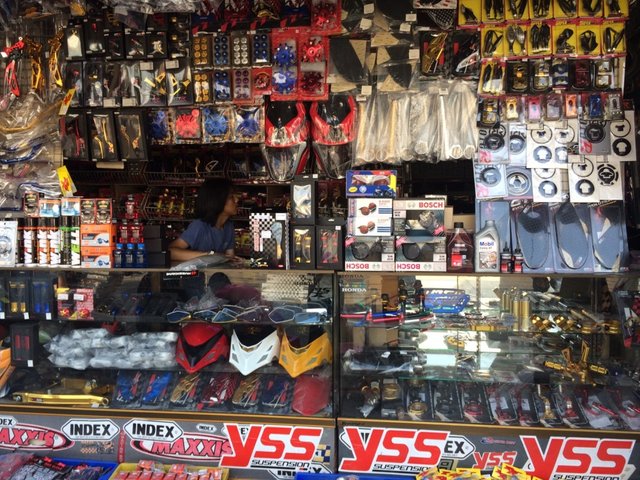Necessary Motorcycle Parts NZ for Peak Performance and Security
Necessary Motorcycle Parts NZ for Peak Performance and Security
Blog Article
Understanding the Important Parts of a Bike: A Comprehensive Guide for Lovers
For motorcycle lovers seeking to raise their riding experience and guarantee their bikes run smoothly, recognizing the necessary parts of a motorbike is critical. Each component, from the engine's detailed workings to the vital function of the braking devices, not only affects performance yet likewise safety and comfort. This overview will walk with the fundamental parts that every cyclist should know with, enabling informed selections in both upkeep and possible upgrades. As we start this exploration, one must ask: how does each part connect to create the seamless trip every lover looks for?
Engine Parts

The camshaft plays an essential function in managing the timing of the engine's shutoffs, making certain the precise opening and closing essential for efficient fuel and air consumption, in addition to exhaust expulsion. This timing is vital to keeping ideal engine efficiency and efficiency. Furthermore, the carburetor or fuel injection system, depending on the bike model, is accountable for blending air with gas in the proper ratio for combustion.
The air conditioning system, either air or liquid-based, works to keep the engine's temperature within operational limits, avoiding overheating and making sure long life - motocross gear nz. Each element, meticulously developed and integrated, contributes to the seamless procedure of the engine, specifying the motorbike's power result and overall performance
Transmission System
Essential to the bike's capability, the transmission system makes certain efficient power transfer from the engine to the wheels. This system comprises numerous important elements, consisting of the clutch, gearbox, and final drive, each playing an essential role in converting the engine's power right into movement. The clutch, typically operated by a hand bar, serves to engage and disengage the engine from the transmission, enabling smooth gear modifications and regulated velocity.
The transmission, often referred to as the transmission correct, consists of a collection of equipments that riders can by hand change through to readjust the bike's speed and torque outcome. These equipments are prepared in a sequence that allows the motorcycle to increase smoothly and maintain optimal engine performance across various rates. A lot of motorbikes use a consecutive gearbox, needing the biker to shift gears in a predetermined order.
Braking Systems
While comprehending the transmission system is essential to using a bike's power, similarly essential is the capacity to manage and quit that power effectively, which is where stopping systems enter play. Brakes are critical for security and efficiency, giving the biker with the required control to navigate various terrains and problems. Generally, motorcycles include two sorts of braking systems: disc brakes and drum brakes.
Disc brakes are extra prevalent in modern bikes due to their superior efficiency. They contain a brake disc, caliper, and pads. When turned on, the caliper squeezes the brake pads against the rotating disc, converting kinetic energy into warm, thus slowing down the wheel. This system supplies far better heat dissipation, constant efficiency, and enhanced quiting power, particularly in damp conditions.
Alternatively, drum brakes, though much less typical, are still located in some motorbikes. They function by pressing brake shoes versus the motorcycle shop inner surface of a drum affixed to the wheel. While typically less reliable in warm dissipation and quiting power, drum brakes are easier and a lot more affordable.
Recognizing these stopping systems' nuances permits riders to preserve their motorbikes properly and appreciate the engineering that makes sure effective and safe quiting.
Suspension and Steering
Suspension and guiding systems are crucial parts that substantially influence a motorcycle's handling and adventure convenience. The suspension system, containing forks at the front and shock absorbers at the rear, absorbs road abnormalities, enhancing stability and control. Front forks, usually telescopic or inverted, compress and rebound to mitigate impacts, while back shock absorbers keep tire call with the roadway, critical for grip and security.
Guiding, focused around the handlebars, connects the biker to the bike's directional control. The guiding head bearings guarantee smooth operation, permitting specific maneuverability. Proper placement and upkeep of these bearings are crucial for predictable steering response and decreasing cyclist tiredness.
The suspension's adjustability is an additional essential facet; preload, damping, and rebound settings allow modification to fit various riding styles and problems. This flexibility is essential for optimizing performance, whether navigating urban roads or taking on rugged routes. Developments like electronic shock absorber supply real-time adjustments, enhancing trip high quality across diverse surfaces.

Electric Equipments
After ensuring a regulated and smooth experience with effective suspension and guiding systems, interest turns to the electric systems, a pivotal facet of modern-day motorbikes. These systems play a crucial role not just in beginning the engine but likewise in powering various parts that boost the performance and safety and security of the bike.
At the heart of a motorbike's electric system is the battery, which stores electric power essential for starting the engine and powering auxiliary systems - mx parts nz. The generator or generator, combined with the rectifier-regulator, makes sure the battery remains charged while the bike is in procedure, transforming power right into electrical energy and preserving voltage degrees
The ignition system, another crucial part, is accountable for sparking the air-fuel mix in the engine's cylinders. Modern motorcycles usually make use of an electronic ignition system, using better performance and dependability compared to standard systems.
Lights systems, including fronts lights, tail lights, and indicators, are also essential, guaranteeing visibility and safety and security for the motorcyclist. Additional digital parts such as sensors, control devices, and presents add to innovative functions like fuel injection monitoring, anti-lock stopping systems (ABDOMINAL MUSCLE), and digital control panels, better enhancing the riding experience.
Final Thought
A complete understanding of a motorbike's essential elements, consisting of the engine, transmission system, stopping devices, suspension, steering, and electric systems, is crucial for enthusiasts aiming to enhance safety and security, comfort, and efficiency. Proficiency of these components permits informed decisions concerning upkeep and upgrades, eventually enhancing the riding experience. By incorporating this knowledge, bikers can ensure their bikes run at peak efficiency and dependability, thereby making best use of both enjoyment and durability of their cars.
For bike lovers looking to raise their riding experience and guarantee their bikes run efficiently, recognizing the crucial elements of a motorbike is vital.Indispensable to the motorcycle's performance, the transmission system guarantees reliable power transfer from the engine to the wheels.While understanding the transmission system is crucial to harnessing a motorcycle's power, similarly vital is the capacity to manage and stop that power properly, which is where braking devices come right into play. Generally, motorcycles feature 2 types of braking systems: disc brakes and drum brakes.
A comprehensive understanding of a motorbike's vital parts, consisting of the engine, transmission system, stopping mechanisms, suspension, guiding, and electrical systems, is vital for fanatics intending to optimize efficiency, safety and security, and convenience.
Report this page